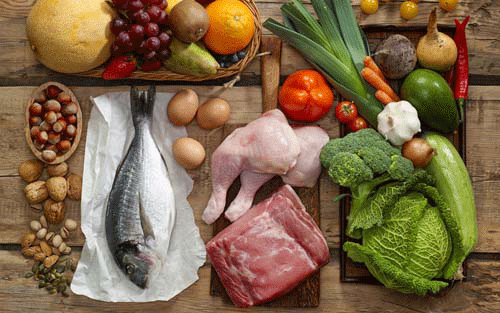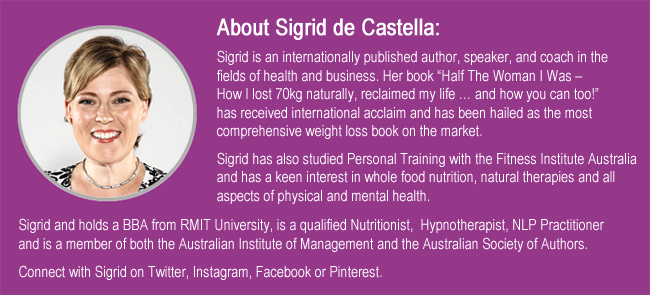Click here for the original InShape News article.
What is a Paleo Diet?
A paleo-based diet is based on raw ingredients, and is often referred to as the ‘caveman’ diet due to the hunt and gather nature of its ingredients. In today’s modern times our ‘hunting and gathering’ tends to be done at the local supermarket or grocer, so think of it as a diet that focusses on home grown or organic seasonal ingredients and generally no- or low-processed foods in recipes made from scratch.

What do you eat on a Paleo Diet?
The paelo-based diet generally consists of meats, fish, nuts, leafy greens, regional veggies, and seeds with some healthy fats and a small amount of fruit.
Meats and fish: Importantly when it comes to meats, it’s a holistic view of the animal that counts rather than focussing on muscle meats (generally the cuts you find at the butcher). So you should include offal, or the internal organs of animals, in your diet. These include hearts, livers, kidneys, brains, trotters, etc. which are richer sources of nutrients than muscle meal. Bone broth is also an important component of a paleo-based diet, and especially good for gut health and addressing allergies. Use a vinegar (with a mother) to help extract the minerals and simmer for at least 24 hours – get Pete Evean’s recipe here or simply watch Paelo Star’s Fast Bone Broth video here.
Nuts: Nuts should be ‘activated’ where possible – soaking them in filtered water to remove impurities and phytic acid, and then dehydrating them. Find out more in this video from The Internet Chef.
Vegetables: the paleo way of life should focus on a vegetable-rich diet (up to 70%) supplemented with some meat, fish, nuts. All vegetables including root vegetables and especially leafy greens are welcomed and eaten in abundance.
Fats: Fruit-based fats are good and used in most meals. These include coconut oil, avocado and olive oil. Nut oils are less often used as the oxidate quickly and are difficult to extract. Coconut oil has the highest smoke point and is good for cooking.
Fruits: Fruits are generally high in fructose and are ‘sometimes’ foods if you chose to adopt a paelo-lifestyle. If you think about our pre-farming ancestors they did not have ready access to bananas, mangoes or even apples. They were not only seasonal, but spasmodic in access. So keep your fruit intake to under 3 pieces a day.
Fermented foods: Fermenting vegetables is one of the new paelo crazes as it increases the nutrients of the vegetables 100-fold and makes them more bio-available. New to fermenting? Check out the Fermenting Queen of Australia, Kitsa Yanniotis’s fermenting recipe video here.
What can’t you at on a Paleo Diet?
In two words – processed foods.
That means no grains, no sugar, no dairy.
Yep, no rice, no pasta, no legumes, no soy, no refined sugar.
What can you replace these with?
Paleo substitutes may seem difficult at first, but once you get the hang of it, it becomes easier. Substitutes include cauliflower rice, Zucchini or squash ‘pasta’, dried fruit, coconut flour, nut meal, flax meal, nut milks and coconut cream. You can check out more substitutes at Paleo Grubs here.
Is a Paleo Diet good for you?
If food is medicine (and it is), then what we eat is who we are, and a paleo way of life makes a lot of sense. Check out PictureFit’s Video here which explains both sides of the paleo story.
It’s well known that a diet rich in the right vitamins, minerals, micro and macro nutrients can repair most, if not all, ailments in the body. In fact, if you ask Australian Paleo Ambassador and Chef Pete Evans he will tell you it’s the only way of eating that is good for you. Check out his ‘Paleo Way’ introductory video here.
Experience has shown that a paleo-style diet eliminates the high inflammatory foods that cause issues and pain in the body. Paleo advocate Dr Sarah Ballantyne (aka The Paleo Mum) provides a lot of evidence-based assistance for autoimmune sufferers on her website.
Are there issues with a Paleo Diet?
There are two main issues with a paleo diet – accessibility and scientific evidence.
Accessibility: The real pitfalls with a paleo-based diet is that it can be time consuming – everything has to be made from scratch. There are plenty of shortcuts once you are familiar with the preparation and cooking techniques, but generally you need to plan ahead: organic foods do not have the same shelf-life as conventional packaged foods, and it can be really hard to find paleo foods when eating out. Paleo diets, due to the organic and grass-fed nature of ingredients, can seem expensive and out of reach of many of those in need of a healthier diet.
Scientific evidence: The Sceptical Nutritionist tries to debunk the paelo diet here with claims from evolutionary biologist, Professor Marlene Zuk, that the paleo diet lacks any rigorous scientific research to support its health claims. They further cite Dr Christina Warriner, archaeological scientist, who states that there was no ‘one way’ of eating when it came to our ancestors, and that due to thousands of years of evolution, the modern cultivated foods we grow bears little likeness to those our ancestors ate.
But having said that you can read well-respected Paleo Grubs article “7 Scientifically Proven Benefits of the Paleo Diet” here and PaeloDietEvolved’s “15 Benefits” including scientific links here.
Is there a wrong way to go paleo?
For sure! For many people paleo is about losing weight or addressing an ailment of the body (arthritis, fibromyalgia, chronic fatigue, adrenal fatigue, diabetes, heart disease, irritable bowel syndrome, etc.). And whilst a true paleo-lifestyle may address and even alleviate many of these conditions, it will only help people to lose weight if the portion sizes and meat to vegetable ratios eaten are truly paleo in nature.
For example, there are now a lot of paleo and raw food ‘treats’ on the market. These contain a lot of concentrated fructose, from dates, dried apricots and prunes or other fruits. We know from last month’s article that there are lots of dangers associated with a high fructose diet. So switching from processed foods to a diet rich in these paleo snacks is not the right way to start, and it’s not truly paleo anyway.
Do you have to count calories on a Paleo Diet?
That is one of the biggest advantages of a paleo-lifestyle – there should be no need to count calories – as long as you do it right.
However, having said that, there is a need to constrain portion sizes and eat more appropriate meal sizes. Restaurants are well known for trying to give you ‘value’ with cheap nutrient-depleted meals rich in bad fats, salt and sugar to make them taste better.
The biggest issue with people on a paleo diet is that they over-eat protein. A small palm sized pieve per meal is all you need. Oh and lots of veggies!
I want to go paleo, but where do I start?
If you’re unsure of where to start, don’t worry, there’s plenty of resources available to help. You can simply search for ‘paleo’ on the web or in your favourite bookstore.
My go-to paleo resource is chef Pete Evans, because he explains things simply, and his recipe books look beautiful. Eat Drink Paleo’s Irena Macri also has some great resources and My Paleoish Life has some fantastic recipes and a new cookbook coming out soon.
If you want something to ‘digest’ immediately then check out Paleo Chef Pete Evan’s “The Paleo Way – Putting It All Into Practice” video here.
Happy hunting.
P.S. if you want more information on the difference between raw, vegan and paleo diets check out this article from PositivehealthWellness here.


